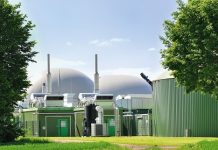In recent years water scarcity has become a hot topic across the world. Mike Pocock, Head of Strategic Planning at Veolia Water Central, advocates addressing this important global issue by implementing local solutions…
Water scarcity presents one of the biggest challenges of this millennium.
It’s high time for us all to place a far greater value on this natural resource, not least because it is essential to life on this planet. We need to take action now if we are to maintain our planet’s equilibrium for the benefit of future generations. Our world is evolving and the pace is quickening. Water has an undeniable link to many crises in modern times, including population growth, climate change, food supplies and prices, energy and financial markets. It has also been the source of conflict between nations – think of the ongoing struggle between Israel and Syria over the Jordan River, or the current tensions between India and Pakistan.
In arid countries such as Kenya and Ethiopia, people place an extremely high value on water. In other parts of the world, however, it’s not even given a second thought – the same can be said of the trillions of gallons of virtual water (the water used to create a product) that are transferred in the global trade of agricultural products like beef and grain, and other products. Clearly, this attitude is no longer sustainable. It’s now time to start thinking more about balancing our own needs with the needs of the environment.
Hidden water
Our consumption of ‘virtual’ water (including rainwater and irrigation water) is astonishing – for example, as a global average, it takes:
- 2,900 gallons to make one pair of jeans
- 1,857 gallons to produce one pound of beef
- 37 gallons to make one cup of coffee.
Source: National Geographic (April 2010)
Sustainable solutions for the commercial sector
Commerce and industry are major contributors to our country’s overall consumption of water. The UK has experienced a phenomenal increase in housing needs in recent years. Although important to the growth of our economy, this places additional pressure on many regions where water is scarce, such as the South East of England. Planners are now investing in the concept of ‘water neutrality’ and in ‘sustainable communities’ which are being built to specifications that aim to minimise the additional burden on the environment.
Developers have to meet strict environmental targets that force construction companies to think about the resources they use and how the communities will use them in the future. So recycling systems could be introduced for ‘grey water’ onsite treatment and reuse. In Sydney Australia, Veolia Water has successfully created a grey water recycling system that reuses stormwater and wastewater from baths, showers and sinks for non-consumption use. Treated shower water is clean enough to wash clothes, dishes and take a shower and bath in, but not quite pure enough to drink. This move has enabled areas within the city to reduce its water footprint and limit its consumption of natural resources.
Organisations that use industrial processes and huge volumes of water to produce products are also coming under pressure to reduce the amount of water they take from natural resources. Food, beverage, paper, pulp, chemical, petrochemical and pharmaceutical companies are required to meet more stringent environmental objectives so are having to find ways to make their processes more efficient. By implementing innovative solutions and technologies, Veolia Water’s Industrial Services arm develops industrial processes that use or carry water more efficiently and cost-effectively.
Achieving a cultural shift in the UK domestic market
In drought-prone regions of the world, water is a precious commodity – in the fight for survival, many people spend several hours a day transporting jerry cans filled with this murky liquid in to their homes and families. In sharp contrast, in the UK we seem to place very little value on water as highlighted by the recent Walker Report. In fact the industry is a victim of its own success, because we have come to expect an almost endless supply of high-quality water; for generations a sense of entitlement and a perception of ‘umbrella weather’ have become embedded within the national psyche and our water-comfort lifestyle. Many people would argue that water falls from the sky, so why should they have to pay for it?
It’s becoming increasingly obvious that we can’t continue like this indefinitely; big changes are needed. This message was spelled out by Defra in Future Water: the Government’s water strategy for England (2008), which sets out a vision of what we want our water sector to look like in 2030. It confirms the vital importance of securing and maintaining water supplies for the prosperity of the country, the health of its people and the environment. And it started the ball rolling with an expectation of a lower water-use economy. In the UK, excessive water consumption is firmly linked to luxury items and improved lifestyles: wetrooms, power showers, garden sprinklers, outdoor jacuzzis and car washes all exemplify this growing trend. In an effort to combat this, manufacturers are coming under pressure from all directions to produce white goods that consume low volumes of water and energy, and some have made significant strides.
Similarly, water companies are starting to influence customer behaviour by providing more extensive billing information that shows changes in consumption and links saving water to lower energy bills. The gradual introduction of water metering across the country is forcing people to understand the link between use and cost. One very welcome spin-off is that, in an effort to reduce their bills, many people have been inspired to apply ‘reduce, reuse, recycle’ principles within their household. Like many other water companies, Veolia Water also works closely with local schools to promote the importance of water conservation. In addition to the ‘water box’ educational cross-curricular tool that is distributed to hundreds of schools, each year Veolia Water’s Education Centre at Bushey in Hertfordshire enables around 20,000 schoolchildren to learn about the water cycle and how water is treated, to make it safe to drink. Armed with information to take home, many of these young visitors succeed in influencing other family members to think about their own water use.
We’re starting to see some really exciting water efficiency programmes being implemented across the country, but achieving cultural change cannot be done overnight. I’m confident that, given time, these measures will raise awareness among the population of the value of water and energy, and that this will in turn drive down consumption levels and help manage demand.
Quenching the thirst of the UK
Growth in demand for water in domestic and commercial sectors results in millions of cubic metres of water being used in the UK every day – this water is extracted from natural resources, which reduces the volumes available for the countryside and to replenish aquifers. And let’s not forget that increased water use inevitably leads to increased greenhouse gas emissions from the various processes involved to supply, treat and heat this water, and then to collect and treat the resultant wastewater. To comply with the European Water Framework Directive, the Environment Agency has done a considerable amount of work in establishing an integrated approach to the protection, improvement and sustainable use of our rivers, lakes, estuaries, coastal waters and groundwater. As part of this, all English regions are now required to produce and implement a River Basin Management Plan.
These activities are emphasising the need to limit the amount of water that will be extracted from the ecosystem, in order achieve an acceptable and sustainable environmental balance. But river basin plans only extend to 2015, so water company forecasts are as yet not able to take account of environmental requirements after that date so more needs to be done here also. Every five years water companies in England and Wales are required to produce a Water Resources Management Plan that outlines how they aim to meet predicted demand for water over the next 25 years.
There are significant challenges ahead for our sector. But the good news is that we still have time to put measures in place to address these issues before they reach the point of no return. I firmly believe that by taking responsibility for our water footprint and remaining receptive to new ways of improving the service we offer to customers, our sector will succeed in achieving a sustainable, long-term balance for future generations to enjoy.





